calsfoundation@cals.org
Ostrich Farm in Hot Springs
In the early twentieth century, a number of distinctive tourist attractions enjoyed tremendous popularity in the resort city of Hot Springs (Garland County). These attractions drew visitors to the town, as did the Spa City’s hot springs. Beginning in 1900, one of the city’s most remarkable places to visit was the Ostrich Farm on Whittington Avenue.
After the Civil War, visitors from all parts of the country began to pour into Hot Springs. With the increasing patronage and resulting improvements in facilities and services, the sleepy little village rapidly acquired the characteristics of a wide-open boom town. By the end of the 1870s, Hot Springs enjoyed widespread acclaim across the nation as a health resort. Naturally, the health seekers needed other activities on which to spend their time (and money) while in Hot Springs, and a variety of entertainment options emerged by the beginning of the twentieth century. Among the most popular of these were Happy Hollow Amusement Park, the Alligator Farm, and the Ostrich Farm.
Thomas A. Cockburn brought more than 300 ostriches to Hot Springs and, in 1900, established the Ostrich Farm on the upper end of Whittington Avenue. A notable sight simply walking around in the farm’s yard, the birds also gave rides to children, pulled small carts with passengers, and even raced on a track at the farm. Many photographs and postcards document the ostriches’ appearances.
Two of Cockburn’s largest ostriches, Black Diamond and Whirlwind, became quite popular. These birds, which were almost ten feet tall and weighed about 400 pounds, occasionally pulled carts of passengers down crowded Central Avenue, piquing the interest of visitors and residents alike. Black Diamond and Whirlwind appeared at Oaklawn Park (now Oaklawn Racing Casino Resort) during most of the Arkansas State Fairs held there from 1906 to 1914. A highly publicized exhibition race was once held between one of the birds and a thoroughbred horse—the ostrich won at short distance, while the horse won at long.
The ostriches produced fashionable feathers that were harvested from the birds twice a year. A shop in Hot Springs sold the feathers, and an even larger market existed among milliners around the country until demand declined during World War II.
Thomas Cockburn died in 1936, but the Ostrich Farm operated until 1953.
For additional information:
Anthony, Isabel Burton, ed. Garland County, Arkansas: Our History and Heritage. Hot Springs, AR: Garland County Historical Society and Melting Pot Genealogical Society, 2009.
Brown, Dee. The American Spa. Little Rock: Rose Publishing Co., 1982.
Covington, Clyde. “The Hot Springs Ostrich Farm.” The Record (2005): 11.1–11.12.
“Ostrich Farm.” Subject file. Garland County Historical Society, Hot Springs, Arkansas.
Wendy Richter
Ouachita Baptist University
 Early Twentieth Century, 1901 through 1940
Early Twentieth Century, 1901 through 1940 Recreation and Sports
Recreation and Sports Whittington Park Historic District
Whittington Park Historic District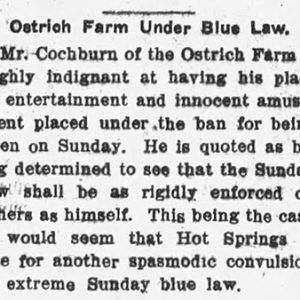 Blue Laws Article
Blue Laws Article 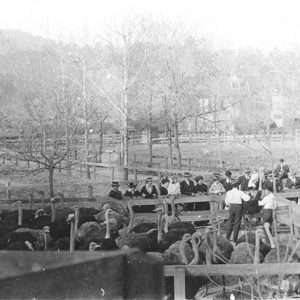 Ostrich Farm
Ostrich Farm 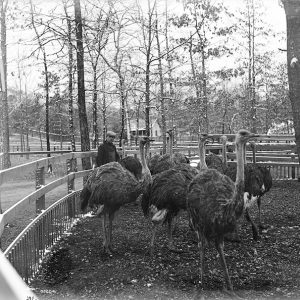 Ostrich Farm in Hot Springs
Ostrich Farm in Hot Springs 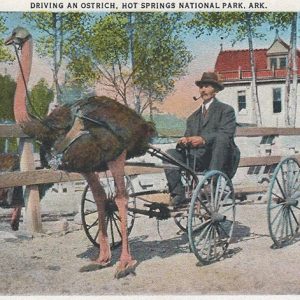 Ostrich Farm Postcard
Ostrich Farm Postcard 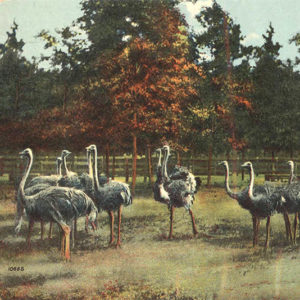 Ostrich Flock
Ostrich Flock 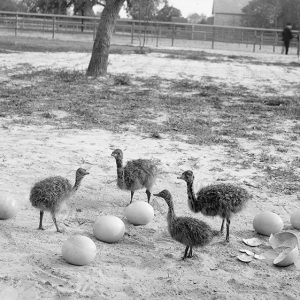 Ostrich Hatchlings
Ostrich Hatchlings  Woman Riding Ostrich
Woman Riding Ostrich 




Comments
No comments on this entry yet.